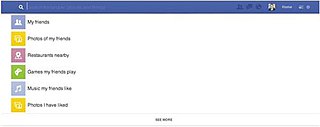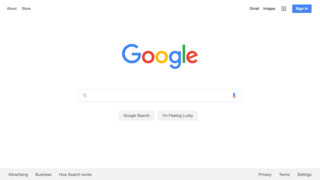
MSN is a web portal and related collection of Internet services and apps for Windows and mobile devices, provided by Microsoft and launched on August 24, 1995, the same release date as Windows 95.
Search engine optimization (SEO) is the process of affecting the online visibility of a website or a web page in a web search engine's unpaid results—often referred to as "natural", "organic", or "earned" results. In general, the earlier, and more frequently a website appears in the search results list, the more visitors it will receive from the search engine's users; these visitors can then be converted into customers. SEO may target different kinds of search, including image search, video search, academic search, news search, and industry-specific vertical search engines. SEO differs from local search engine optimization in that the latter is focused on optimizing a business' online presence so that its web pages will be displayed by search engines when a user enters a local search for its products or services. The former instead is more focused on national or international searches.

Bing Maps is a web mapping service provided as a part of Microsoft's Bing suite of search engines and powered by the Bing Maps for Enterprise framework.
Bing Ads is a service that provides pay per click advertising on both the Bing and Yahoo! search engines. As of June 2015, Bing Ads has 33% market share in the United States.
IceRocket was an Internet search engine which specialized in real-time search. Based in Dallas, Texas, it launched in 2004 hoping to market itself solely through word of mouth.

Bing is a web search engine owned and operated by Microsoft. The service has its origins in Microsoft's previous search engines: MSN Search, Windows Live Search and later Live Search. Bing provides a variety of search services, including web, video, image and map search products. It is developed using ASP.NET.

Christopher Reaves Messina is the inventor of the hashtag as it is currently used on social media platforms. In a 2007 tweet Messina proposed vertical/associational grouping of messages, trends, and events on Twitter by the means of hashtags. Simply put the hashtag was to be a type of metadata tag that allowed users to apply dynamic, user-generated tagging which made it possible for others to easily find messages with a specific theme or content; it allowed easy, informal markup of folk taxonomy without need of any formal taxonomy or markup language. Hashtags have since been referred to as the "eavesdroppers", "wormholes", "time-machines", and "veins" of the internet.
How do you feel about using # (pound) for groups. As in #barcamp [msg]?
Social search is a behavior of retrieving and searching on a social searching engine that mainly searches user-generated content such as news, videos and images related search queries on social media like Facebook, LinkedIn, Twitter, Instagram and Flickr. It is an enhanced version of web search that combines traditional algorithms. The idea behind social search is that instead of ranking search results purely based on semantic relevance between a query and the results, a social search system also takes into account social relationships between the results and the searcher. The social relationships could be in various forms. For example, in LinkedIn people search engine, the social relationships include social connections between searcher and each result, whether or not they are in the same industries, work for the same companies, belong the same social groups, and go the same schools, etc.
Bing Shopping is a products search and discovery service that helps save time by bringing products from multiple sellers together on a single website. It uses the power of Bing to show product results–including photos and product details. Products can be filtered and prices compared. Purchases are completed on the seller’s website.
Bing News –a news aggregator powered by artificial intelligence–is a part of Microsoft's Bing search engine, which processes billions of global searches. Operating in the United States and other international markets, Bing News displays the latest news stories on Bing.com/News on desktop and mobile, the Bing Search app, and through enterprise streams such as the Outlook News Connector, PowerBI and Bing for business. Bing News also aggregates the most recent news articles in response to user search queries algorithmically on Bing.com.

Plurk is a free social networking and micro-blogging service that allows users to send updates through short messages or links, which can be up to 360 text characters in length.

LeapFish.com was a search aggregator that retrieved results from other portals and search engines, including Google, Bing and Yahoo!, and also search engines of blogs, videos etc. It was a registered trademark of Dotnext Inc, launched on 3 November 2008.

TweetDeck is a social media dashboard application for management of Twitter accounts. Originally an independent app, TweetDeck was subsequently acquired by Twitter Inc. and integrated into Twitter's interface.
Reblogging is the mechanism in blogging which allows users to repost the content of another user's post with an indication that the source of the post is another user.
Google+, sometimes pronounced as Google Plus or G+, was an Internet-based social network owned and operated by Google. The network was launched on June 28, 2011 which replaced Google Buzz in the attempt to challenge other social networks such as Facebook, Instagram, LinkedIn, Myspace, Pinterest, Tumblr, Twitter and Vimeo and it was designed to link Google's products like Blogger and YouTube. However, these competitive plans by Google via Google Wave (2009–2010), Google Buzz (2010–2011) and Google+ (2011–2019) were never successful and were completely shut down as a result.

Facebook Graph Search was a semantic search engine that was introduced by Facebook in March 2013. It was designed to give answers to user natural language queries rather than a list of links. The Graph Search feature combined the big data acquired from its over one billion users and external data into a search engine providing user-specific search results. In a presentation headed by Facebook CEO Mark Zuckerberg, it was announced that the Graph Search algorithm finds information from within a user's network of friends. Additional results were provided by Microsoft's Bing search engine. In July it was made available to all users using the U.S. English version of Facebook. In December 2014, Facebook changed its search features, dropping partnership with Bing, and eliminating most of the search patterns.

Topsy Labs was a social search and analytics company based in San Francisco, California. The company was a certified Twitter partner and maintained a comprehensive index of tweets, numbering in hundreds of billions, dating back to Twitter's inception in 2006.
Google Search, offered by Google, is the most widely used search engine on the World Wide Web as of 2014, with over three billion searches a day. This page covers key events in the history of Google's search service.












